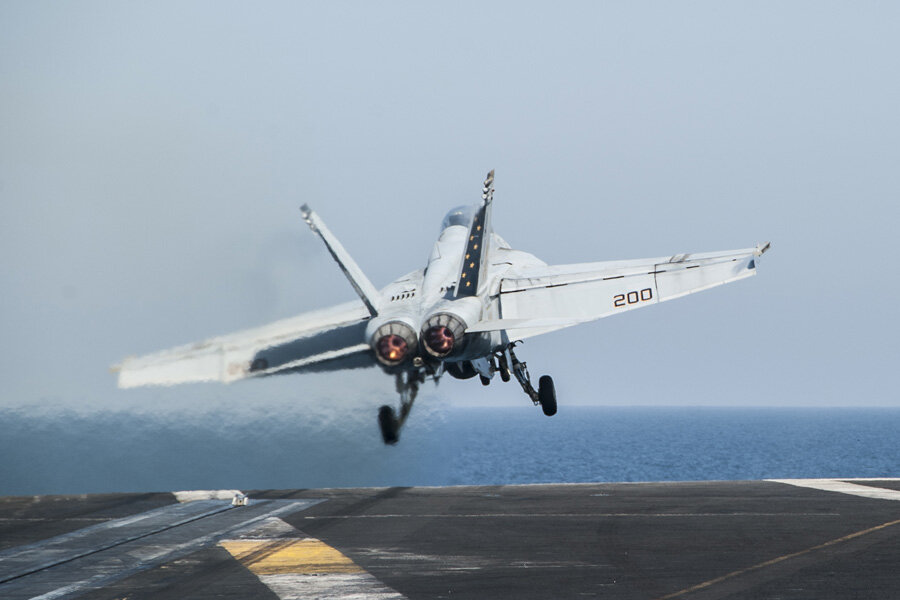Islamic State: Would three old MiGs an air force make?
Loading...
And now the self-described Islamic State is building an air force? Reports emerged Friday of IS fighters flying three jets around a captured airbase in northwestern Syria, though there is as yet no indication that the apparently aging warplanes are capable of carrying out offensive operations.
The Britain-based Syrian Observatory for Human Rights reported that former Iraqi air force pilots were training IS fighters to fly the jets, which were captured from the Syrian armed forces. The activist group said the planes – believed to be Soviet-era MiGs – were seen flying around an airbase in Aleppo Province this week.
"People saw the flights, they went up many times from the airport and they are flying in the skies outside the airport and coming back," said Rami Abdurrahman, director of the Observatory, according to the BBC.
The Sunni militant group is known to have seized Syrian fighter jets from at least one air base in Raqqa Province earlier this year, the Associated Press reported. Militant websites had posted pictures of IS fighters posing next to the planes, according to the AP, but it was unclear if they were operational.
The Observatory report could not immediately be independently verified. A spokesman for US Central Command (Centcom) told Reuters that the Pentagon was “not aware” of IS flight operations in Syria.
"We continue to keep a close eye on [IS] activity in Syria and Iraq and will continue to conduct strikes against their equipment, facilities, fighters, and centers of gravity, wherever they may be,” Col. Patrick Ryder told the news agency.
But even if the reports are true, three decades-old MiGs stand almost no chance against the modern warplanes of the US-led coalition. According to the Reuters report, it was unclear whether the pilots could fly long distances – or if the jets were even equipped with weapons.
The coalition, meanwhile, is continuing its airstrikes against IS targets spread across Syria and Iraq.
Maj. Gen. Jeff Harrigian, a senior US Air Force official, said the US had conducted 74 percent of the more than 240 strikes between Aug. 8 and the end of September. The US arsenal includes an array of fighter jets, bombers, drones, and Tomahawk missiles.
Last month, Australia sent eight fighter jets along with 600 military personnel to the United Arab Emirates to help in the anti-IS fight. Britain, Canada, France, Belgium, the Netherlands, and Denmark have all sent or agreed to send warplanes to the region. But so far those countries have limited their military resources to Iraq, citing the lack of a United Nations resolution authorizing the use of such force in Syria.
Coalition members in the Middle East haven’t followed the same constraints. Saudi Arabia, the UAE, Jordan, Bahrain, and Qatar have all contributed aircraft to missions over Syria. Centcom reports that Saudi Arabia conducted joint airstrikes with the US as recently as Monday, hitting IS targets near the besieged Kurdish town of Kobane on the border with Turkey.
For weeks the airstrikes on the IS forces surrounding Kobane seemed only to slow the jihadists' advance into the city, but a recent intensification of the air campaign has helped Kurdish fighters on the ground to repel the invaders, Kurdish sources said this week.







